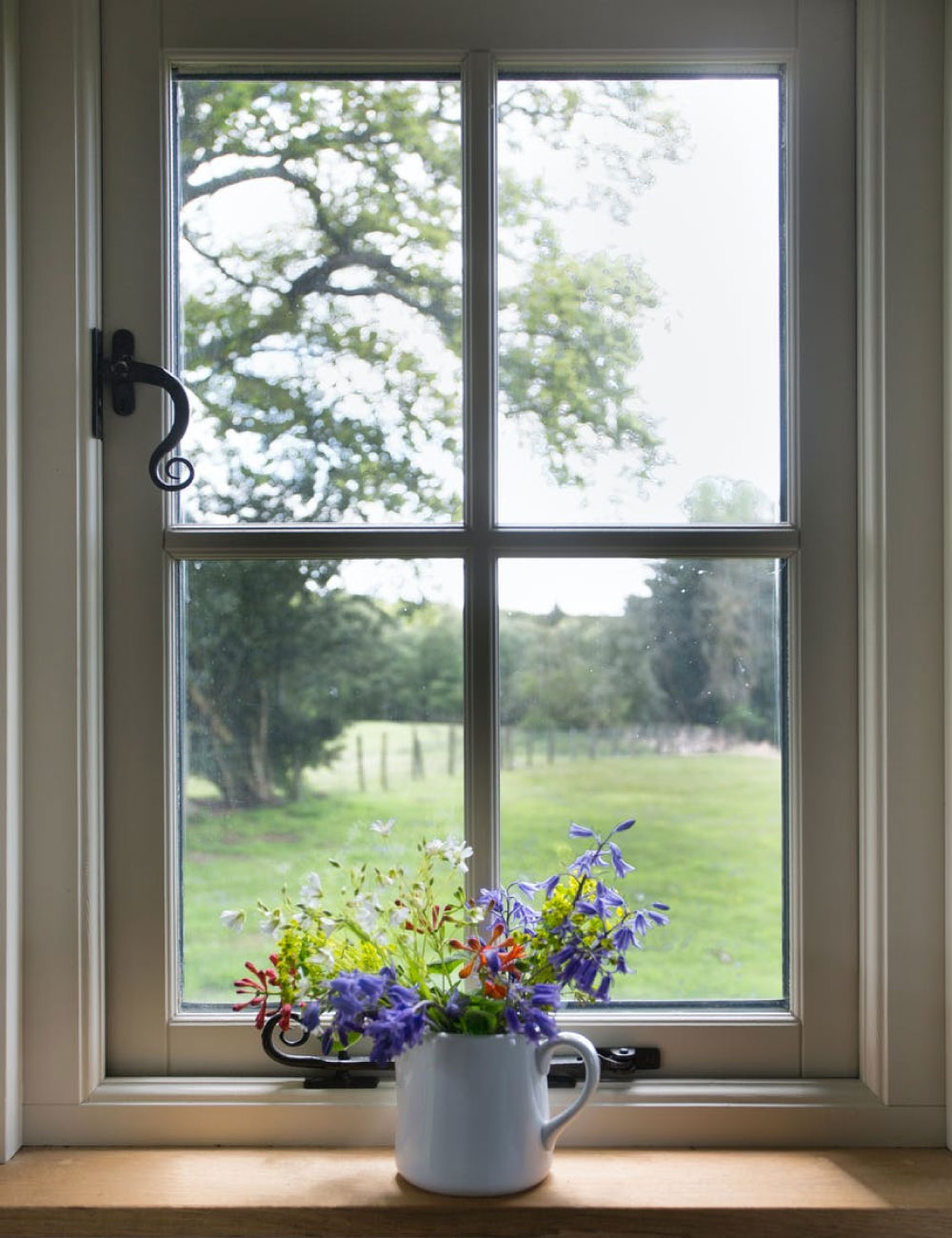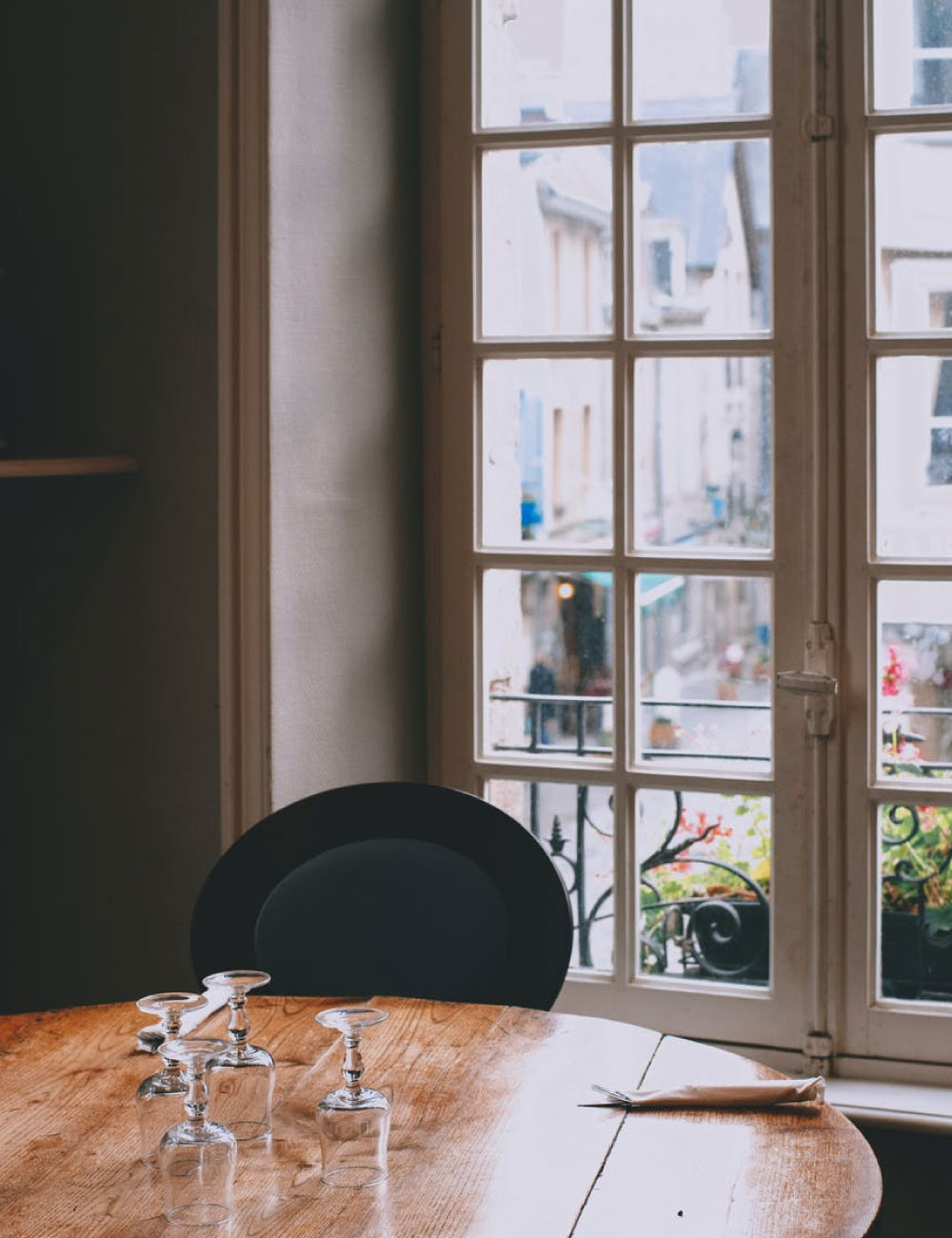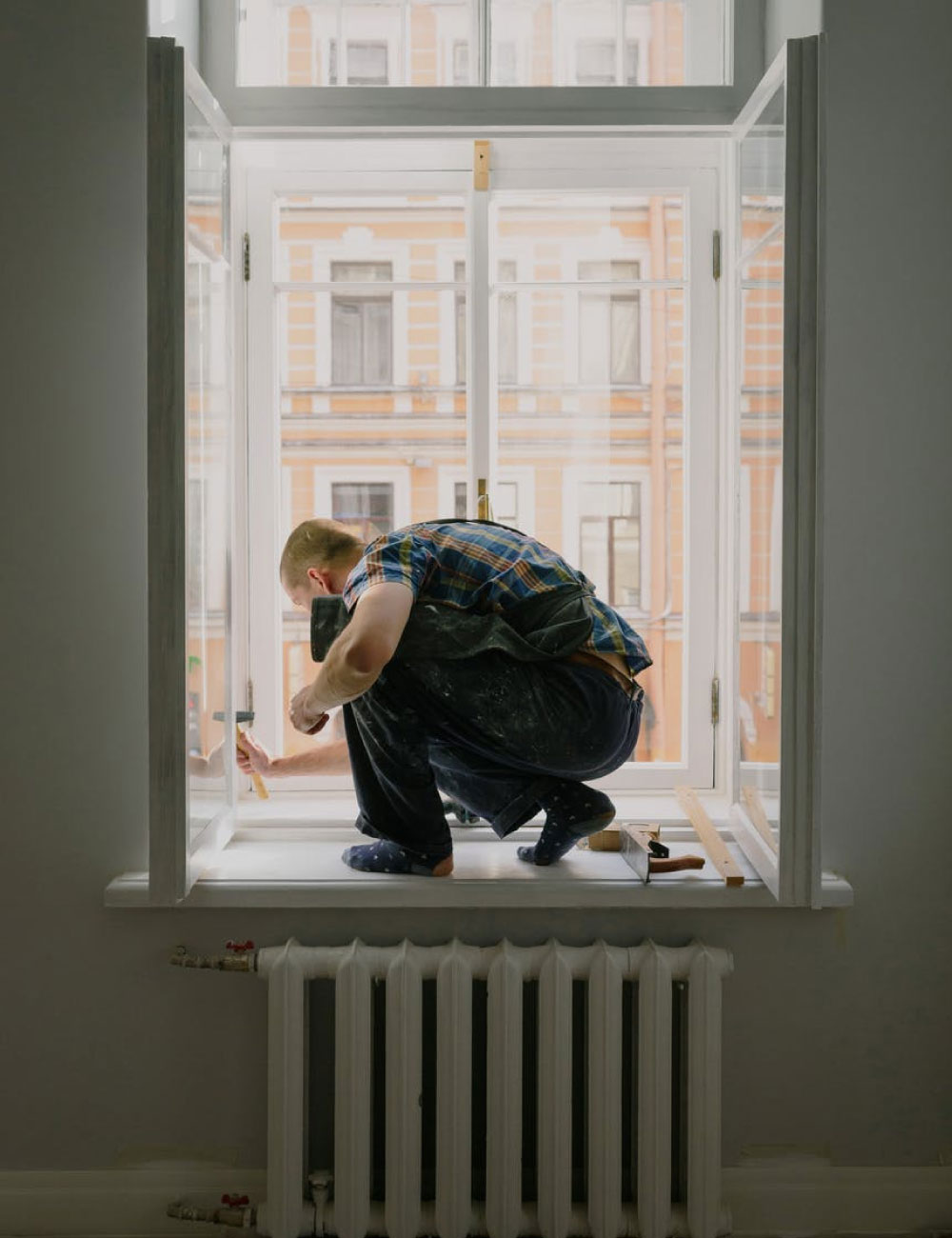WINDOW SECONDARY GLAZING 101
Total window replacements are sometimes unnecessary when there are ways to replace your old windows without destroying them. A simple window overlay is not all that you need to complete your window replacement. When one avails a window frame replacement it is mostly accompanied by a window secondary glazing. In this article, we will discuss all about window secondary glazing, its differences from other forms and benefits.
Get A Quote
WHAT IS A WINDOW SECONDARY GLAZING?
A window secondary glazing is done without replacing your existing windows and is a great way to enjoy warmth, security and quietness. This will reduce sound transmission by up to 70% and hugely improve your heat insulation during the winter season. It is also ideal for reducing noise and draughts. They are very easy to fit, very affordable and strong that will last you years of service.

WINDOW SECONDARY GLAZING VS DOUBLE GLAZING
Double-glazed windows are made by sandwiching two sheets of glass with a space between them. This gap functions as an insulating barrier, keeping the heat in and the cold out, whether it’s filled with an inert gas like argon or left empty. When it comes to thermal insulation, double-glazed windows are the gold standard, therefore most homeowners will want to go with this, or something similar. Window secondary glazing is used in this situation.
Installing a second glass layer behind an existing single-glazed window is known as window secondary glazing. While window secondary glazing can be a long-term solution, it is frequently utilized as a stopgap measure.
By adding an internal secondary window to your existing single-glazed window, you can create double glazing. The secondary window is a separate unit that is installed on the room side of your existing windows and sealed around the edges. It consists of a single glazed pane within its own frame.
Horizontal sliders, vertical sliders, top hung, side hung, double side hung, lift-outs, and detachable fixed panels affixed to the back of the window are among the window secondary glazing options.
WHAT ARE ITS BENEFITS?
- Secondary glazing is one of the best ways to reduce noise and soundproof your windows, it can reduce external noise by around 70%. This can be enhanced further by specifying either Laminate glass.
- Draught Proofing is the other most common reason to install secondary glazing.
- Our secondary glazed system can even incorporate flyscreens.
- Extra security.
- Retains the exterior look/character of the property.
SECONDARY GLAZING IS LESS EXPENSIVE
Double glazing is significantly more expensive than window secondary glazing, owing to the fact that it necessitates the installation of fully new units. However, with window secondary glazing, you may simply retrofit an existing set of single-glazed windows, which requires less precision and is far less expensive.
SECONDARY CAN BE DONE DIY
When it comes to double glazing, the spacing between the panels is crucial to the insulative process, which is why such units are typically constructed to order and must be manufactured and fitted by professionals. The window secondary glazing method is far more adaptable. You have the option of purchasing the panels and attempting to install them yourself or having a professional glazier install them for you (which we prefer).
SECONDARY GLAZING PROVIDES BETTER ACOUSTIC INSTALLATION
While both types of windows are effective at reducing incoming and outgoing noise, window secondary glazing wins out. Having two distinct pieces of glass, as opposed to sealed double glazed units, can aid because they operate as noise barriers individually. The better the noise dampening, the larger the space between the two panels. If you want to listen to music loudly or have noisy neighbours, this is definitely something to consider!
SECONDARY GLAZING REDUCES HEAT LOSS
Heat retention is a major long-term benefit of window secondary glazing. This is because it puts a second layer of glass behind your primary windows, reducing both the amount of warm air that can exit and the amount of cold air that may enter your home.
Your heating system’s heat will stay inside instead of escaping via inefficient windows, and there will be fewer draughts, making you feel warmer. As your home becomes more energy efficient, your heating expenditures may drop significantly, which is good for you and good for the environment.
SECONDARY GLAZING CAN REDUCE EXTERNAL NOISE
Window secondary glazing works as an additional physical barrier against outside noise, limiting the amount of noise that enters your home through (closed) windows.
Installing special sound-reducing laminate glass or having a gap of at least 100 mm between the secondary and primary window and lining the window head and reveals in between with acoustic tiles might increase noise reduction even more.
SECONDARY GLAZING CAN PROVIDE EXTRA PROTECTION
Window secondary glazing eliminates the need to replace your existing primary windows, and there are numerous advantages to keep your original windows.
This is especially beneficial in listed structures, buildings subject to the Article 4 Directive, and locations where planning approval regulations prohibit any aesthetic changes to the major windows on the exterior.
Window secondary glazing, which does not require planning approval, may be the only effective solution to reduce heat loss and increase sound insulation in these older houses.
Window secondary glazing can be used in various situations when windows cannot be replaced or if the cost is prohibitive. It’s also a terrific budget-friendly alternative for rented housing.
SECONDARY GLAZING IS LOW MAINTENANCE
Window secondary glazing requires little maintenance and causes less inconvenience than replacing primary double or triple glazed windows, and it can last for many years.
SECONDARY GLAZING CAN RESULT IN SIGNIFICANT SAVINGS
Because window secondary glazing does not necessitate the entire removal and replacement of your existing windows, it is far less expensive and easier to install than replacement windows.
DISADVANTAGES OF WINDOW SECONDARY GLAZING
Window secondary glazing does have its drawbacks. Plastic panes, such as polycarbonate and acrylic, can get foggy (less transparent) over time. It’s a natural result of exposing plastic to the sun, as well as poor treatment. In addition, systems that require complete disassembly in the summer require storage, which increases the risk of damage.
Then there’s the aesthetic consideration. Some of the higher-quality systems are quite good at matching existing windows, but others, especially the cheaper ones, can take some getting used to. This is more of a problem in Conservation Areas and with historic structures.
Finally, window secondary glazing can never match the main glazing in terms of thermal performance. Because it is installed on pre-existing frames, the gap between the panes will always be greater than 12mm. The lack of a seal between the panes exacerbates the potential for air circulation. Primary double, or possibly triple, glazing will be required if the refurbishment project is aiming for high levels of thermal efficiency.


IS A WINDOW SECONDARY GLAZING WORTH IT?
Window secondary glazing may be the ideal approach to make your windows more energy efficient in the correct situation. We analyze the benefits and drawbacks, whether we need window glass replacement or not, as well as the overall value for money.
Window secondary glazing is a viable option for increasing the energy efficiency of single-glazed windows in your home. Window secondary glazing involves leaving the old windows in place while adding another pane of glass to create something that resembles double glazing.
Many people find it appealing, especially when dealing with draughty single-glazed windows, as an alternative to the costly procedure of totally replacing them.
How successful is window secondary glazing, though? That is the question we must answer in order to determine whether it is a viable alternative for keeping your home warmer and more energy efficient, or whether it is merely a false economy.
WHY CHOOSE WINDOW SECONDARY GLAZING?
Double glazing is significantly more expensive than window secondary glazing, owing to the fact that it necessitates the installation of entirely new units. However, with secondary glazing, you may simply update an existing set of single-glazed windows, which does not necessitate the same level of precision and is significantly less expensive.
DIFFERENT TYPES
PERMANENT uPVC
In many circumstances, this type of window secondary glazing is the ideal option, and it entails installing an internal secondary window behind your current single-glazed window. For increased thermal efficiency, the secondary panel will have its own frame and be sealed around the borders.
Pros: the most robust, dependable, and energy-efficient secondary glazing option available.
Cons: Proper installation will necessitate the services of an expert.
PERMANENT WOODEN
Any window secondary glazing measure that uses wooden frames to hold the secondary panel in place is referred to as wooden secondary glazing. Fortunately, wooden secondary glazing is available in a wide range of styles and colours, allowing you to simply match the frame’s colour to that of your existing windows.
Pros: The biggest advantage of wooden secondary glazing is that it can seem quite attractive in the correct context.
Cons: It is not the most cost-effective solution and may necessitate extensive upkeep.
SECONDARY GLAZING FILM
Secondary glazing film is a thin, transparent sheet of plastic that can be applied to an existing window to provide the illusion of double glazing. While not as effective as appropriate secondary glazing, it is a viable option for people who are short on both time and money.
Pros: secondary glazing film is inexpensive and simple to apply, and it provides a slight thermal benefit.
Cons: Secondary glazing film isn’t particularly attractive at its best, but it might seem shabby if fitted incorrectly. Also, even with the best installation in the world, the film will sag and need to be replaced over time.
TEMPORARY
Secondary glazing, as we’ve discussed before, can be a long-term answer, but it’s frequently thought of as a more transitory option. As a result, temporary secondary glazing can refer to any basic, lightweight screen that can be added to or removed from an existing pane as needed.
Pros: For individuals who want the benefits of double glazing, temporary secondary glazing is a cost-effective and adaptable option.
Cons: Depending on how temporary the solution is, temporary secondary glazing may not be cost effective. If the duration is only a few months, you may want to continue with one of the simpler alternatives indicated above; if the duration is longer, you may want to consider a more permanent version.
WHY CHOOSE US?
Here at Heritage Specialists, we also do window glass replacement, sash window restoration, sash window refurbishment, timber window repairs and many more. We are currently one of the top companies who offer window replacement Sydney. If you have any questions, explore our official website or contact us through phone or email so we can answer your questions directly.
